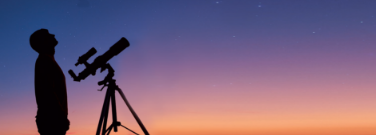Improving Our Understanding of the Universe One Telescope at a Time

By Tom Wright
Just when you thought the James Webb Space Telescope (JWST) was the greatest thing in space, NASA unveiled plans for a new telescope designed to locate and identify habitable planets in our galaxy.
That’s right, astronomers are looking for planets where life already exists or could exist in the future.
In early January, members of the American Astronomical Society lined up to listen to Mark Clampin, director of the astrophysics division of NASA, discuss plans for the Habitable Worlds Observatory (HWO). This telescope is still a long way from completion, but the ramifications of it are far reaching and delve into science fiction—making it possible to look for aliens and find planets for humans to potentially colonize.
Exploring Aliens and Other Worlds
The team working on this project identified over 5,000 astronomical objects called exoplanets, or planets that orbit around stars other than our own. Though the properties needed for life are often debated, most agree that there are at least four requirements. The planet must be:
- Rocky and not gaseous like Jupiter or Saturn
- Near a stable star that provides somewhat consistent light
- Cool enough to support liquid water
- Warm enough that the water isn’t all frozen
The ability to host liquid water is mostly dependent on temperature, but there are a variety of other factors that must be met. Ultimately, water is the catalyst for life as we know it.
Of the 5,000 exoplanets identified, approximately 300 have the characteristics needed for life. Of those 300, only 25 are nearby (less than 100 light-years away). And these are the best candidates for colonization.
Launching the Habitable Worlds Observatory
The HWO is expected to launch in the 2040s—as early as seventeen years from now. Unlike the JWST, the HWO will be robotically serviceable. The JWST cannot be upgraded, serviced, or even refueled, but the HWO should have the capacity for all three, including upgrades to instrumentation as technology advances, giving it a much longer lifespan.
The HWO will be smaller than the JWST and can be housed in the nose cone of a conventional rocket. Unlike the JWST, it will not have to be unfolded when it is deployed. This lowers its chance of being damaged during deployment and will create tighter tolerances for the telescope’s mirrors, allowing it to see into the ultraviolet spectrum and get a better glimpse of near-Earth exoplanets.
The HWO is still in its early stages and there are many hurdles to overcome. But once photos of the identified near-Earth exoplanets are available, astronomers might be able to answer this age-old question: Are we alone in the universe?
Discussion Questions
- Think about the requirements needed for life on Earth or another planet. What else do you consider a necessity to sustain life?
- How will the Habitable Worlds Observatory improve our understanding of the universe?
